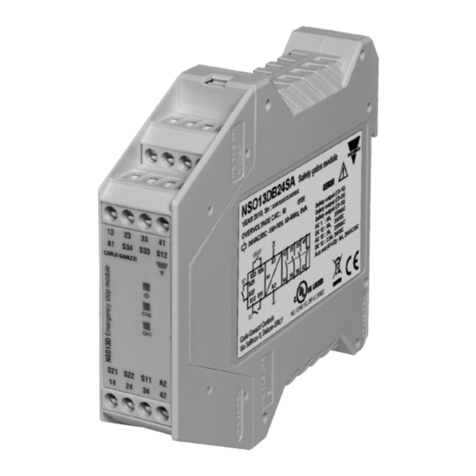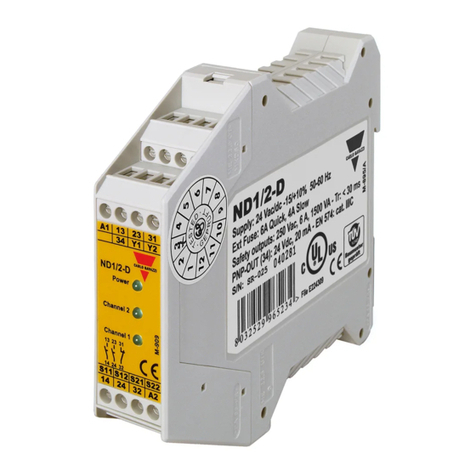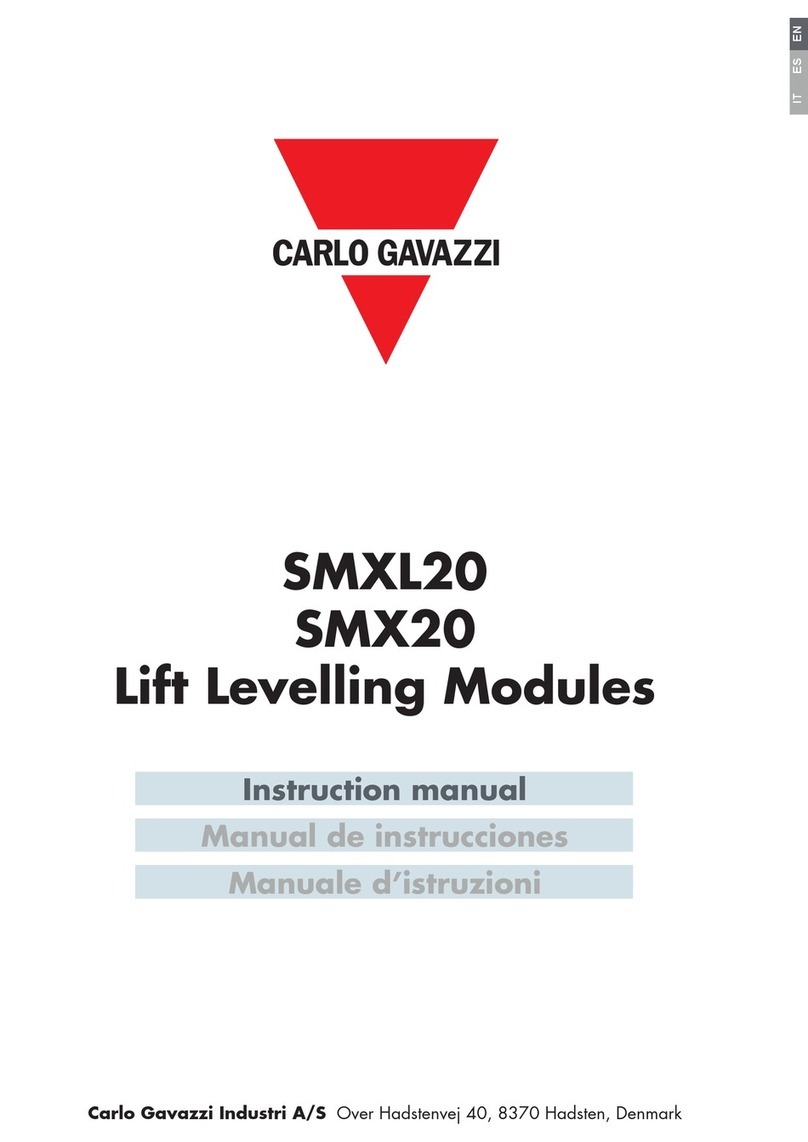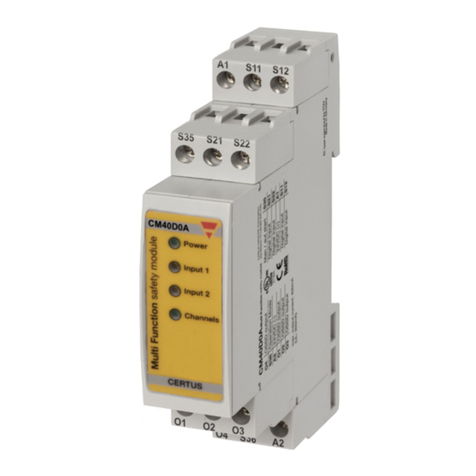6
pushed).
The CH1 &CH2 LEDs turn on as
soon as the safety outputs close.
Pushing the E-STOP button leads
to a safety condition, forcing the
safety outputs to an open status
when the delay has expired. The
POW ER,CH1 &CH2 LEDs turn off.
A new operating cycle is possible
only after releasing the E-STOP
button (and pushing the START
button, if the safety module has
been set up with manual START
configuration).
6. TEST & ACTIVATION
The following operations must be
repeated when the module is
installed and every time the wiring
is changed and at regular intervals
by carrying out in sequence all the
steps described below without any
type of dangerous condition for the
operators.
STEP 1Check the integrity, the
correct installation, the correct
positioning on the machine and the
correct functioning of all the
devices connected to the inputs
and to the outputs of the NA13CT
safety module. Check also the cor-
rect wiring of all the devices (See
4.2) and the integrity of the labels
and documentation.
STEP 2Power on the safety mod-
ule with E-STOP button not pushed:
with manual START configuration
the POW ER LED turns on, while
the CH1 and CH2 LEDs are off, the
safety outputs are open and the
auxiary output is closed (in auto-
matic START configuration all the
LEDs are on, the safety outputs
are closed and the auxiliary output
is open).
Close the N.O.START contact: the
safety outputs close, the auxiliary
output opens and the CH1,CH2
LEDs turn on.
STEP 3Push the E-STOP button:
the safety outputs open (after the
delay has expired), the auxiliary
output closes and the POW ER,
CH1,CH2 LEDs turn off (always
when the delay has expired).
Repeat STEP 2 checking that the
safety outputs do not close - with
manual START configuration - sim-
ply releasing the E-STOP device,
without pushing the START button.
Check also that the safety outputs
do not close, that the auxiliary out-
put does not open, and that the
POW ER,CH1,CH2 LEDs are off
simply pushing the START button
with E-STOP button pushed.
If more than one E-STOP is used,
the STEPS 2 and 3 must be
repeated for each device.
7. USAGE PRECAUTIONS
The safety module can check the
integrity of external contactors or
expansion modules simply con-

































